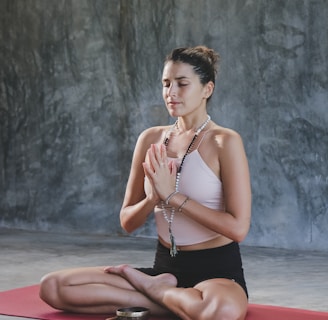Advantages of Kapalabharti Pranayama
Practicing this form of pranayama can also promote mental clarity, focus, and concentration. Many practitioners report increased energy levels and a sense of rejuvenation after their sessions. Furthermore, Kapalabharti helps in reducing stress and anxiety, fostering a greater sense of calm and well-being. Incorporating Kapalabharti Pranayama into your daily routine can lead to significant improvements in overall health and vitality. As always, it's advisable to practice under the guidance of a qualified instructor, especially if you're new to pranayama techniques.


Kapālabhātī prāṇāyama is considered a powerful practice for mental and physical cleansing. The word "kapāla" relates to the skull, while "bhāti" means having a bright or clear appearance. Engaging in this form of prāṇāyama regularly can help induce a trance-like state and awaken the kuṇḍalinī energy within. Unlike bhastrikā prāṇāyama, which has different goals, kapālabhātī focuses specifically on clearing and illuminating the skull, facilitating the movement of kuṇḍalinī from the ājñāchakra to the sahasrāra. Many who practice it view it as a vital aspect of kriyā yoga. It's advisable to master this technique before transitioning to nāḍi śodhana prāṇāyāma. To practice, start on an empty stomach. Find a comfortable seated position with your palms down on your thighs, ensuring your arms have enough room to avoid any tension in your shoulders. Maintain a straight spine and slightly tilt your head back. Begin with a deep inhalation through your nose, allowing your abdomen to expand, followed by a strong exhalation, also through the nostrils. As you exhale, remember to contract your abdomen as part of the yogic breathing process. Start gently; you can gradually increase the intensity of your exhales as you progress. Keep your focus on the ājñāchakra and be aware of the sensations and vibrations in that area. In your initial practice, aim for five successive rounds, and then move up to ten rounds as you become more comfortable. Each round consists of one complete inhalation and followed by one full exhalation. After five rounds, take a brief moment to rest before continuing. The upper limit for practice is 15 rounds at a time. Should you experience any headaches or discomfort, it’s best to stop. This prāṇāyāma is excellent for purifying both the cranium and lungs, promoting better blood circulation and enhancing the function of the nervous system.
